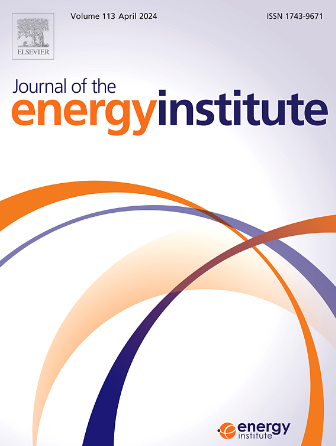Development of a comprehensive model for evaluating slagging characteristics in the Co-combustion of coal and biomass
IF 5.6
2区 工程技术
Q2 ENERGY & FUELS
引用次数: 0
Abstract
Slagging during the co-combustion of coal and biomass poses significant challenges to boiler safety and efficiency. Existing research lacks a comprehensive and systematic slagging prediction approach to accurately assess the slagging risks associated with different coal and biomass combinations. To address this gap, this study investigates the slagging behavior of anthracite (AN) and three types of crop residues through ash fusion temperature (AFT) tests, X-ray fluorescence (XRF), and X-ray diffraction (XRD) analysis. In addition, an E-PLS slagging evaluation model was established using the entropy weight (EW) method and partial least squares regression (PLSR). The ash fusion temperature (AFT) results show that the slagging tendency of the three biomass is moderate, while anthracite has a low slagging tendency. With the addition of biomass, the slagging tendency of the samples increases. XRD analysis confirms that the addition of biomass promotes the reaction between quartz and potassium, sodium, and calcium compounds, enhancing the diffraction intensity of calcium feldspar, potassium feldspar, and sodium feldspar. The E-PLS evaluation results indicate that the slagging tendency of the three biomass is moderate, and anthracite has a low slagging tendency, which is consistent with the experimental results, demonstrating the accuracy of this method. The findings provide a useful reference for predicting slagging tendencies during the co-combustion of biomass and coal.
求助全文
约1分钟内获得全文
求助全文
来源期刊

Journal of The Energy Institute
工程技术-能源与燃料
CiteScore
10.60
自引率
5.30%
发文量
166
审稿时长
16 days
期刊介绍:
The Journal of the Energy Institute provides peer reviewed coverage of original high quality research on energy, engineering and technology.The coverage is broad and the main areas of interest include:
Combustion engineering and associated technologies; process heating; power generation; engines and propulsion; emissions and environmental pollution control; clean coal technologies; carbon abatement technologies
Emissions and environmental pollution control; safety and hazards;
Clean coal technologies; carbon abatement technologies, including carbon capture and storage, CCS;
Petroleum engineering and fuel quality, including storage and transport
Alternative energy sources; biomass utilisation and biomass conversion technologies; energy from waste, incineration and recycling
Energy conversion, energy recovery and energy efficiency; space heating, fuel cells, heat pumps and cooling systems
Energy storage
The journal''s coverage reflects changes in energy technology that result from the transition to more efficient energy production and end use together with reduced carbon emission.
 求助内容:
求助内容: 应助结果提醒方式:
应助结果提醒方式:


